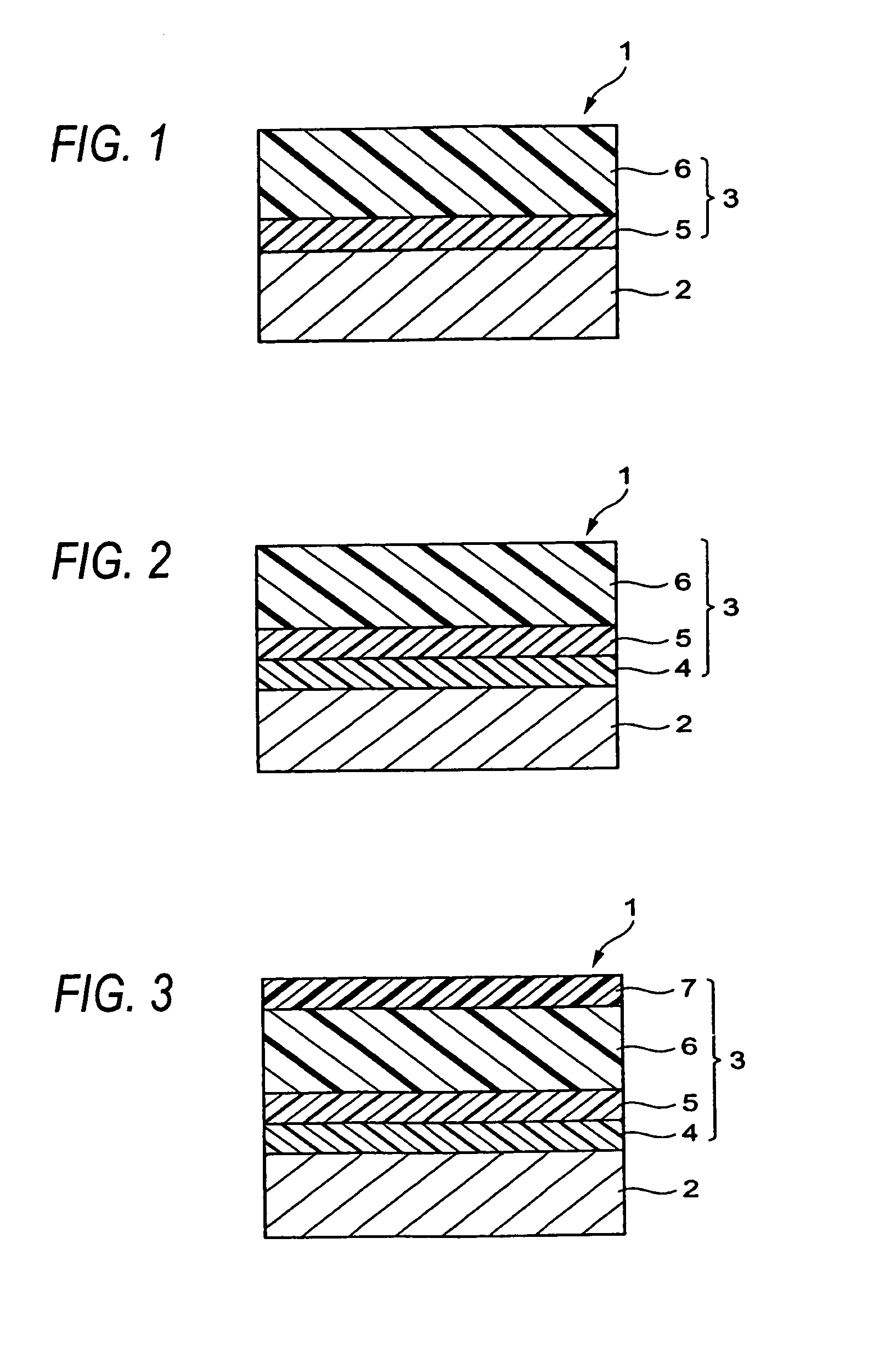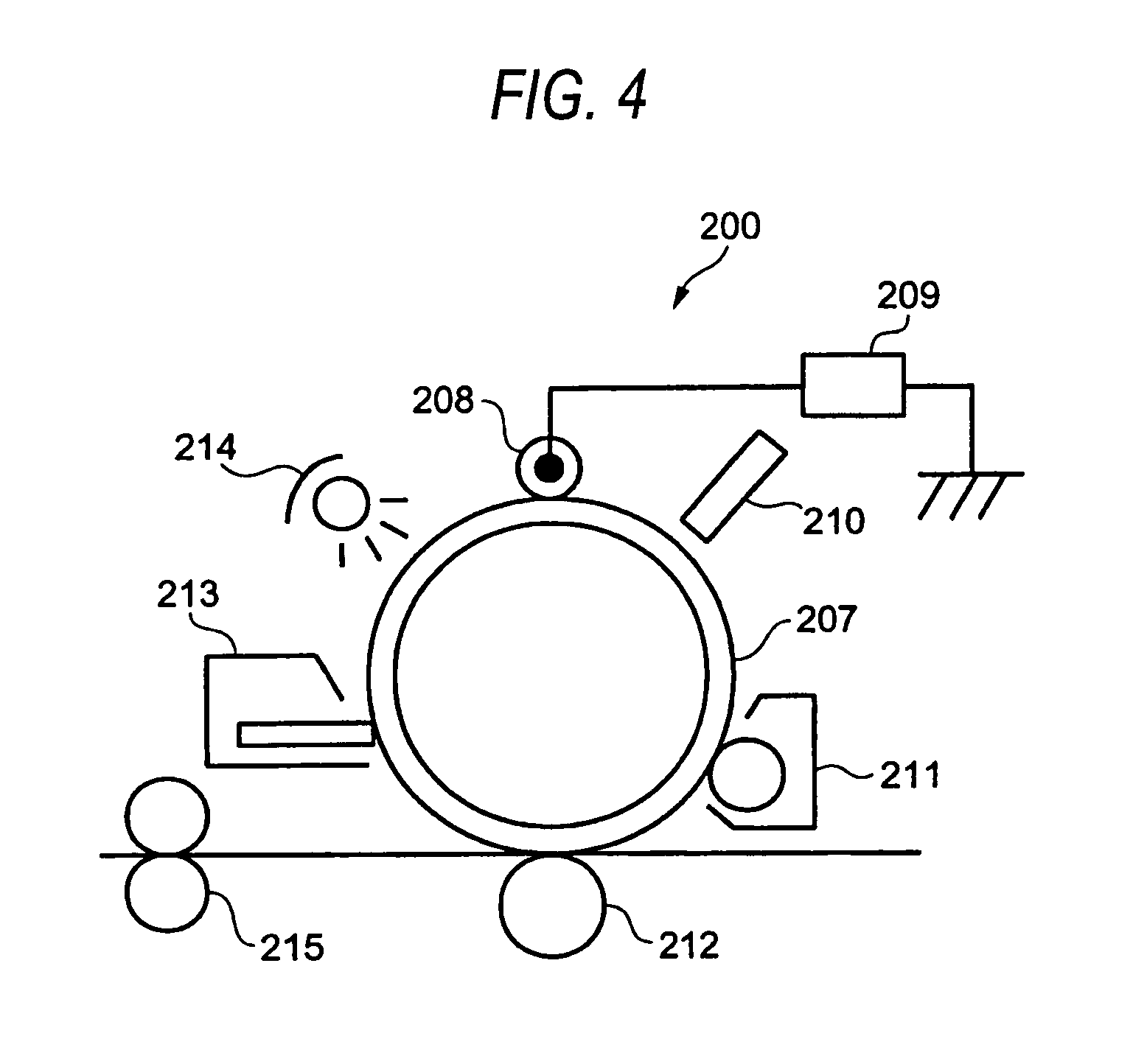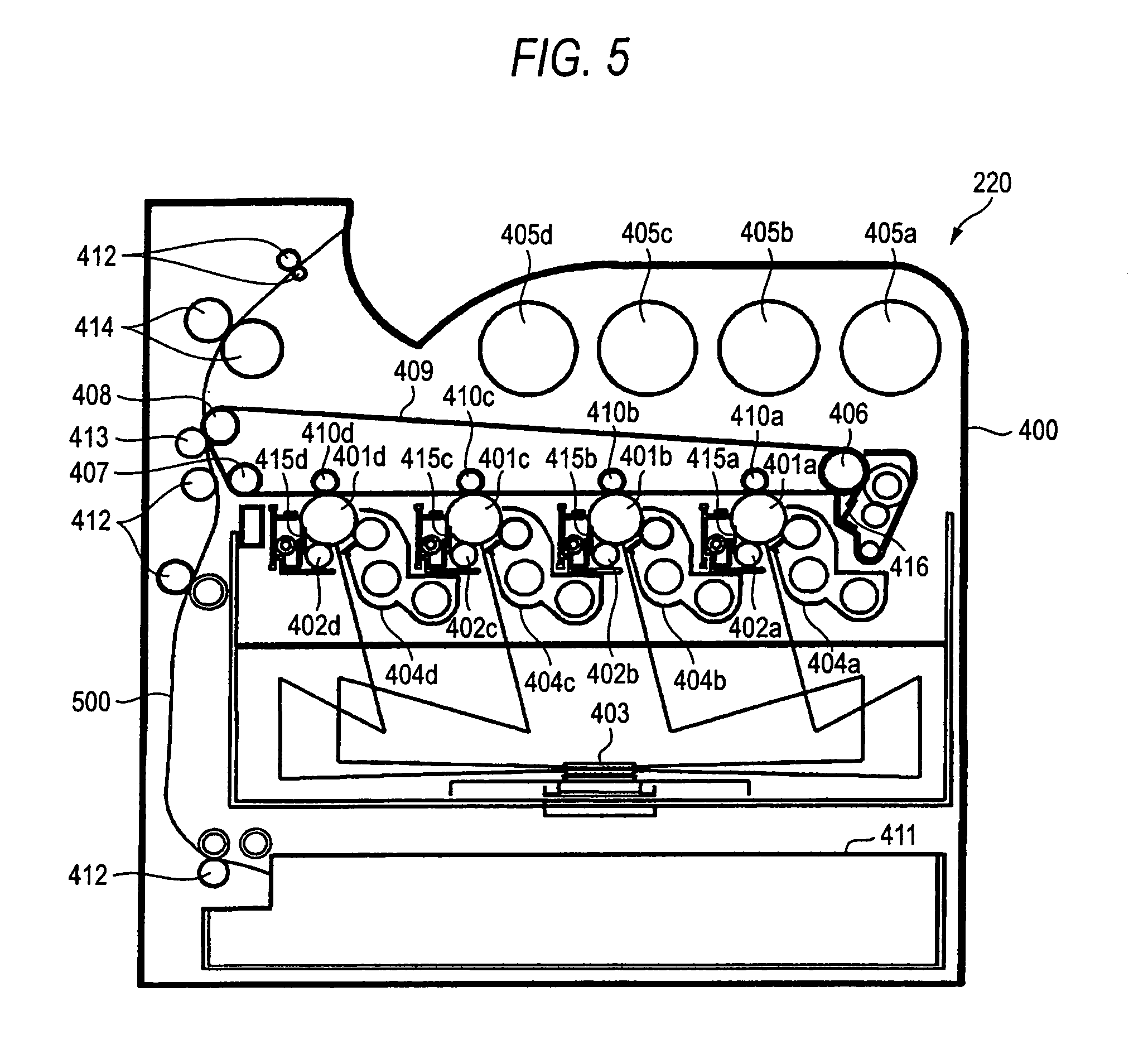Electrophotographic photoreceptor, method for producing the same, image forming apparatus and process cartridge
a photoreceptor and electrophotographic technology, applied in the field of electrophotographic photoreceptors, can solve the problems of deteriorating image quality, production cost, and above-mentioned conventional electrophotographic photoreceptors not necessarily sufficient in electrophotographic characteristics and durability, and achieves low crosslinking density, improve stain resistance against the developing agent, and insufficient durability
- Summary
- Abstract
- Description
- Claims
- Application Information
AI Technical Summary
Benefits of technology
Problems solved by technology
Method used
Image
Examples
example 1
[0168]An electrophotographic photoreceptor having a constitution similar to that of the electrophotographic photoreceptor 1 shown in FIG. 3 is prepared through the following procedure. A solution comprising 100 parts of a zirconium compound (trade name: Orgatics ZC540, manufactured by Matsumoto Chemical Industry Co., Ltd.), 10 parts of a silane compound (trade name: A110, manufactured by Nippon Unicar Co., Ltd.), 400 parts of isopropanol and 200 parts of butanol is applied by dip coating onto a cylindrical Al substrate subjected to honing treatment, and dried by heating at 150° C. for 10 minutes to form a 0.1-μm undercoating layer.
[0169]Then, as a charge generation material, 10 parts of chlorogallium phthalocyanine crystals having strong diffraction peaks at Bragg angles (2θ±0.2°) of 7.4°, 16.6°, 25.5° and 28.3° in an X-ray diffraction spectrum using CuKα radiation is mixed with 10 parts of a polyvinyl butyral resin (trade name: S-LEC BM-S, manufactured by Sekisui Chemical Co., Ltd....
example 2
[0173]An undercoating layer, a charge generation layer and a charge transport layer are formed in the same manner as with Example 1. Then, the kinds and amounts compounded (parts) of components for forming a siloxane resin, polyvinyl butyral resin, fine particles, distilled water, catalyst, multidentate ligand and antioxidant are changed as shown in Table 2, and a 3-μm protective layer is formed on the charge transport layer in the same manner as with Example 1 to obtain a desired electrophotographic photoreceptor. In Example 2, the dispersing step is omitted. In Table 2, SUMILIZER BHT is a trade name of a hindered phenol antioxidant (manufactured by Sumitomo Chemical Co., Ltd.).
example 3
[0174]An undercoating layer, a charge generation layer and a charge transport layer are formed in the same manner as with Example 1. Then, the kinds and amounts compounded (parts) of components for forming a siloxane resin, polyvinyl butyral resin, fine particles, distilled water, catalyst, multidentate ligand and antioxidant are changed as shown in Table 2, and a 3-μm protective layer is formed on the charge transport layer in the same manner as with Example 1 to obtain a desired electrophotographic photoreceptor.
PUM
| Property | Measurement | Unit |
|---|---|---|
| oscillation wavelength | aaaaa | aaaaa |
| Ra | aaaaa | aaaaa |
| Ra | aaaaa | aaaaa |
Abstract
Description
Claims
Application Information
 Login to View More
Login to View More - R&D
- Intellectual Property
- Life Sciences
- Materials
- Tech Scout
- Unparalleled Data Quality
- Higher Quality Content
- 60% Fewer Hallucinations
Browse by: Latest US Patents, China's latest patents, Technical Efficacy Thesaurus, Application Domain, Technology Topic, Popular Technical Reports.
© 2025 PatSnap. All rights reserved.Legal|Privacy policy|Modern Slavery Act Transparency Statement|Sitemap|About US| Contact US: help@patsnap.com



